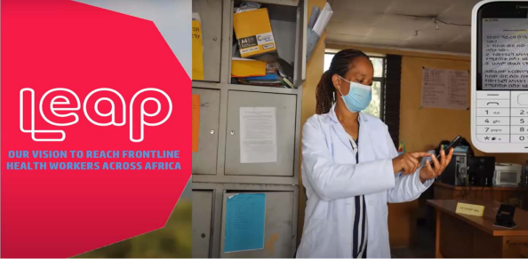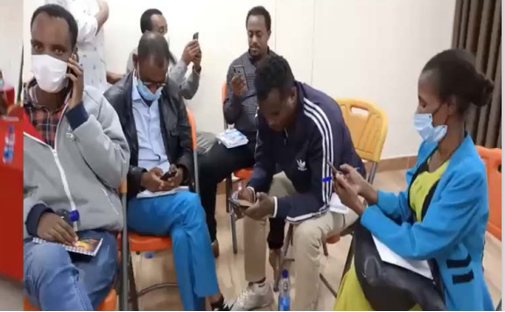.tmb-768v.png?Culture=en&sfvrsn=54737d84_1)
Digital health strategies to mitigate the impact of COVID-19 on the delivery and use of essential RMNCAYH* services in Ethiopia
Author
World Health Organization
This action brief is extracted from the series of key action briefs on “maintaining the provision and use of services for maternal, newborn, child and adolescent health and older people during the COVID-19 pandemic” published by the WHO Department of Maternal, Newborn ,Child and Adolescent Health and Ageing. To access the series, please click here.
This brief was developed using information collected from existing documents as well as information captured through discussions with key institutional stakeholders. The views in this brief do not necessarily represent the decisions, policy or views of the World Health Organization.
* Reproductive, maternal, newborn, child, adolescent and youth health
Country
Ethiopia
Key learning points
• The Ministry of Health’ strategic partnership and engagement of stakeholders at different levels of the health system increased interest in the digital platform and was instrumental in achieving high coverage of Leap.
• A system-level framework and incentives for using digital health tools, clearly communicated to participants, can improve participation and training completion.
• Access to devices with adequate capacity for digital training tasks is essential for health extension workers to access the full benefits of digital capacity-building.
• Workforce training and skills transfer are important to ensure sustainability, but continued support from external experts may be needed when the Ministry of Health takes over management of a digital health intervention.
Background
Ethiopia has made promising progress towards achieving universal health coverage, particularly in maternal and child health, over the past few decades. Maternal mortality has been reduced by more than one half in the last two decades and under-5 mortality declined from 88 deaths/1000 live births in 2011 to 59 deaths/1000 live births in 2019. The country is working towards achieving the 17 Sustainable Development Goals, with a current overall score of 54.5% and a spill-over score of 99.7%.
Impact of COVID-19 on essential health services
The first case of COVID-19 was reported in Ethiopia on 13 March 2020. A survey conducted in five World Health Organization (WHO) regions to assess countries’ experiences with and responses to maintaining the continuity of essential health services during the COVID-19 pandemic revealed that most countries, including Ethiopia, experienced some degree of disruption in reproductive, maternal, newborn, child, adolescent and youth health (RMNCAYH) services. A two-year (2019-2020) trend analysis of health systems data on RMNCAYH services utilization confirmed these findings.
What was the intervention or activity?
The Ministry of Health implemented several strategies to mitigate the impact of COVID-19 on the delivery and use of essential RMNCAYH services. Digital health interventions were important in this effort and included providing toll-free call centre services, remote training of frontline community health workers, regular phone calls and virtual meetings with regional health bureaus to monitor health system performance and the use of digital communication platforms.
The Leap platform
An m-Health learning platform, Leap, was introduced to train frontline community health extension workers (HEWs) in May 2020. Nearly 40 000 HEWs (85% rural, 15% urban) are deployed throughout the country to serve the community in more than 7587 health posts. Leap enables HEWs to undergo training remotely at any time using mobile phones anywhere in the country.
Outcomes of the implementation
As of 1 September 2021 (five months after the initial launch), 410 HEW supervisors and 3305 HEWs completed the RMNCAYH training. About one third (35.0%) of the enrolled HEWs completed the training.
HEWs found the training to be timely and helpful for coordinating the COVID-19 response. The easy access to training materials was convenient for revision whenever needed. The self-paced approach provided flexibility and allowed HEWs to organize their learning around their busy schedules, without affecting their daily duties. HEWs said the remote format was helpful in reducing the risk of transmission of COVID-19.
Challenges
• Accessing the mobile network due to low network strength made it difficult to receive training text messages.
• Lack of adequate orientation on the training and its benefits were reported by some health workers.
• Frequent phone number changes by HEWs and the use of shared phones resulted in training interruptions.
• The limited storage capacity of some basic phones prevented HEWs from receiving new messages to complete their training unless they deleted older messages.
• The training completion rate was lower in urban areas, which may be attributed to high staff turnover.
• The capacity of the Leap platform was limited to train 120 learners at a time, making it difficult for HEWs to access and complete their training.



